Bald Eagles Fledge in Mid-Atlantic 2015
It Is Still Catfish For Grace June 5, 2015
June 6, 2015Grace – No Change – It’s Catfish June 13, 2015
June 15, 2015Within the American Bald Eagle mid-Atlantic population there are some not-so-suttle changes taking place. Late May and throughout June young eaglets are leaving their natal nests trees for the first time, called fledging. What is so different is where these nests are located. When I was a boy growing up I do not recall ever seeing a bald eagle, not just because their population was being decimated by our use of DDT, but because bald eagles just did not live in residential neighborhoods in Norfolk like mine.
In the Lower Hampton Roads area of Southeast Virginia there is now plenty of evidence to show that at least a part of the bald eagle population has relocated into human occupied habitat like our residential housing, golf courses and even a very busy highway intersection. This is the time of year when the young in these nests take to the air on their own for the first time. They have not yet developed the wing strength to stay aloft for long, and their landing skills are minimal often crash landing, even hanging up-side-down. Occasionally, when out of energy they just land where ever they are, which is often someone’s yard. A fledgling was observed last week in Virginia Beach, two houses from its nest, in a back yard of a neighbor looking through the glass door.
Here are photos of recent nest graduates shortly after leaving home.
Hunt Club Point, Norfolk, VA May 30, 2015 about two blocks from its nest (photo Reese F Lukei Jr)
The first of three fledgings at Saw Pen Point in Virginia Beach, on the ground June 5, 2015 in its back yard (photo Reese F Lukei Jr)
The first of three eaglets at Kempsville Rd and Princess Anne Rd actually taking its first flight on June 10, 2015 as photographed by Pam Monahan
Not all the young bald eagles leave their natal homes and survive without some human assistance. On June 1, 2015 a juvenile was spotted on the ground at a busy street corner in Ocean View in Norfolk. Pearl Beamer, wildlife rehabilitator, was called to the scene. After a period of observation the eagle flew away. Later that night the juvenile was sighted on the ground again at a man’s open garage and was guided inside and kept for the night. The next morning the owner of Acme Animal Control was called who picked up the eagle and delivered it to Pearl Beamer. The eagle was determined to have feather mites and was significantly underweight. After Pearl’s expert care the young bald eagle was taken to Ocean View Elementary School in Norfolk on June 12, 2015 where the Mariner Rangers, students in the environmental conservation program, assisted Reese Lukei, Jr, CCB Research Associate, in taking measurements and placing identification leg bands on the eagle, who is now wearing purple band “MB”. The juvenile was then released back into the urban wilds from where it came by Ocean View Elementary School Principal Dr. James Peterson. It is not know where the nest is located that this fledgling came from, but in the future she is now identified.

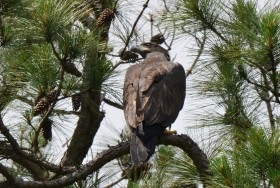

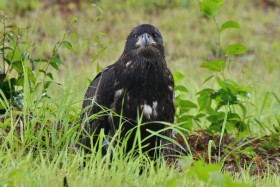
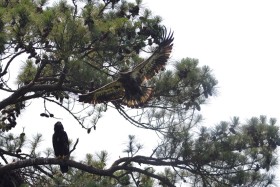
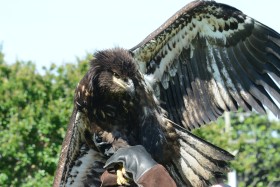
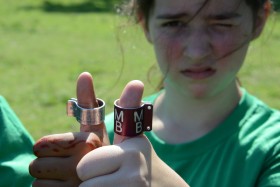
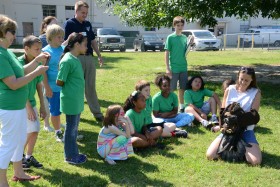
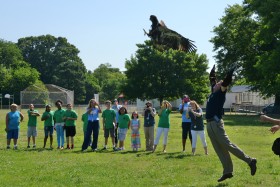
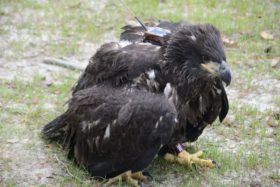
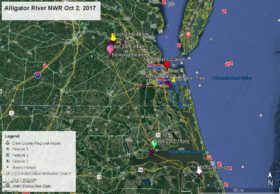
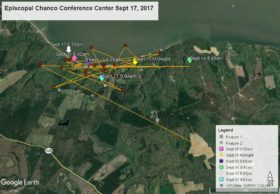
4 Comments
Once again, Mr. Lukei, thank you for all you do for our wildlife and for how kindly you teach us, especially the younger ones to whom we will leave it all.
Certainly a banner year for the eagles and it’s been great sharing it with you!!
Reese, as always thank you for keeping the info coming! It’s awesome the elementary school was so involved with MB. Up here, south of DC, we have one nest with one fledge about a week ago. Happily still waiting for the next two nests, combined 5 eaglets; should be this week.
Thank you so much Reese..these young-in’s sure keep you on your toes…I love reading about people who come to the aid of these eaglets to give them a helping hand…Well done…